2013 Ford C-MAX Energi Review

To compete with the Toyota Prius, Ford needs to have every weapon on the rack loaded and ready for action. With the C-Max Hybrid, Ford proved it possible to have an energetic and practical fuel-friendly hybrid vehicle. Now with the C-Max Energi, Ford is rounding out its options for consumers who want fewer emissions, and more guilt-free electric-hustle.
FAST FACTS
| 1. Energi is Ford’s Plug-in Hybrid brand. |
| 2. Range on electricity alone is rated at 21 miles, and overall range is 620 miles, 80 more than the Toyota Prius Plug-in. |
| 3. The C-Max Energi is rated at 108 MPGe city, 92 MPGe highway and 100 MPGe combined. |
| 4. Charging the C-Max Energi takes 2.5 hours using a 240-volt charger. |
| 5. A $3,750 federal tax credit brings the base price of the C-MAX Energi down to $29,995, making it the cheaper than the Prius Plug-In and Chevrolet Volt after incentives. |
When we took a look at the C-Max Hybrid last month, we found a vehicle that managed comparable fuel-economy to the Prius, as well as excellent cargo and passenger space. The C-Max Energi is still a hybrid, but is designed for even more fuel-savings thanks to an amped up battery pack that will allow for up to 21 miles of electric-only range. When that battery runs out, the C-Max acts like a normal hybrid, switching between its 2.0L four-cylinder engine, and the electric motor as needed, while charging the battery with regenerative brakes.
With the C-Max riding on the same platform as the Focus, there’s no doubt that the vehicle exhibits a ‘European’ driving style, which means that the ride is much more precise than what is found in the C-Max’s primary rivals, like the Toyota Prius Plug-in. While ride-quality is very much a driver preference, there are many quantifiable differences between the Prius plug-in and the C-Max Energi. With 195-hp and an electric-mode top speed of 85 mph, the Ford has a significant advantage over the Prius plug-in which has just 134 hp and a top speed of 60 mph on electric power. That’s not all, according to the EPA, the C-MAX Energi has a total range of 620 miles (21 of which are emissions free) which is 80 miles more than the Prius Plug-in.
Still, Toyota took about 10 years to refine the hybrid package that is quite popular with consumers today, so while the spec-sheet is in favor of Ford’s latest offering, we set off to ensure that the numbers don’t lie.
BATTERIES INCLUDED
Before the C-Max is even put into Drive, there’s a small issue. The colorful smart-gauge with EcoGuide is indicating that it’s only good for 20 miles of pure electric driving ahead, which is one mile short of Ford’s 21 mile promise. The loss of that extra mile is likely the result of an incomplete charge cycle, but that didn’t stop us from rushing around downtown San Fransisco to find the similarities between the Energi and the Hybrid, as well as test out this plug-in’s range claims.
Following a topping up of the battery, the first main difference that the Energi shows is in power delivery. While only seven horsepower more than the regular hybrid, it feels peppier with excellent throttle response.
The second noticeable difference in the Energi, is in the way the brakes behave. Where we found the C-Max Hybrid to have touchy brakes, the Energi has smoothed out that feel. In addition to a more natural feel, it also ensures that more electricity is captured through regenerative braking, since the brakes drag on a bit further. To ensure that the driver is getting the most out of this EV, the C-Max has a few key eco-coaches that grade you on your braking performance, and use of the go-pedal.
Helping to manage the flow of battery power is an ‘EV mode’ button, something that was missed on the regular Hybrid. This allows direct control of the flow of electricity so you can choose to drive emissions free immediately, or save it for later. In the interest of the consumer, we decided to let the C-Max do the thinking for us, and left it in EV-Auto mode.
As a result, the electric range dwindled down to nothing in just 15.1 miles, quite a few miles short of Ford’s 21 mile claim. Assuming that the Toyota Prius Plug-in stands true to its claim of 15 miles, the C-Max doesn’t make much of an improvement over the Toyota.
When in all-EV mode we managed to reach highway speeds easily and comfortably, and while we didn’t reach the 85-mph limit for fear of a speeding ticket, it seems likely that Ford wasn’t bluffing.
NOT YOUR AVERAGE HYBRID
Once the battery is drained, the switchover to normal gas-electric hybrid powertrain is seamless, and there’s active noise cancellation to help keep the cabin quiet. From then on, the C-Max is pretty much identical in operation to its regular Hybrid stable-mate, a solid compliment.
Over our 100-mile journey to our first stop we managed a wonderful 74.5 mpg (that’s including the first 15 miles at 100 MPGe). Following a short break, where the C-Max was re-charged briefly, we made our way back to San Fransisco, including up the windy PCH, where the C-MAX delivered just under 70 mpg overall. Certainly not bad, and perhaps over the whole 200-mile journey the fuel gauge moved just a tick or two, inspiring plenty of confidence and no range anxiety.
The route on PCH highlighted the C-Max’s tight handling feel. Thanks to a platform shared with the Focus, the C-Max is much better on the winding roads than a Prius. The steering feel is fairly intuitive, with a good feel for the turns and a decent amount of feedback. However the low-rolling resistance tires, high curb-weight and tall profile limits the C-Max’s overall handling.
The CVT transmission, while smooth in city driving, was responsive on the open road and made little noise unless really pressured.
TICKING THE BOXES
At $32,950 the C-Max Energi is only available in one trim, but has a few packages to choose from. Our tester was equipped with Ford’s Rapid Spec 302A package, which adds premium stereo and navigation, keyless entry and start, a rear-view camera and a panoramic sunroof. This extra equipment brings the total of the C-Max up to $36,635. Fortunately, the C-Max Energi is eligible for a $3,750 federal tax credit, which makes it cheaper than the Prius Plug-in, although not by much ($29,995 vs $30,260) after destination and tax credits.
Of note, with the Energi model, there’s an extra $1,500 fee to get a charge port installed in your home, something that isn’t reflected in the MSRP of PHEVs.
The price-tag borders on the entry-level luxury car segment, so prospective buyers of the C-Max Energi are clearly looking for an eco-friendly vehicle and don’t mind paying for it. The seats cushioning is made of Soy foam, while plastic bottles are recycled and used in for the cloth seats and denim jeans are recycled for use as in sound-deadening. Of course all this eco-friendliness is a moot point when it’s mentioned that the leather is, in-fact real. Sorry PETA.
The C-Max is a comfortable vehicle, with near-excessive head-room, and it isn’t lacking in leg or cargo-room either. The addition of the bigger battery intrudes a bit in the trunk of the Energi vehicle, but this is still a practical wagon.
Trunk space is rated at 19.2 cu-ft, down from 24.5 cu-ft in the regular Hybrid model, while total cargo room is 42.8 cu-ft, down from 52.6.
Placement of key controls is good, and you don’t have to go hunting for any buttons on the dash (although the liftgate control is slightly obscured by the gear-stick.) Visibility is also good, with little convex side mirrors proving to be helpful in illuminating blindspots, and in tighter maneuvering situations.
Just like the hybrid model, the Energi has a healthy spark of technology including the familiar MyFord Touch with Sync. Like a few other Ford products coming out, the C-Max includes redundant tactile controls for HVAC settings, meaning you don’t have to fumble with the touch-screen to change the cabin temperature or fan speeds. Along with MyFord Touch are two gorgeous LCD screens that surround the speedometer.
A handy available feature that wagon-fans will surely love is the hands-free liftgate. The power-liftgate will automatically open when you swing your foot under the rear-bumper, which is great for when your hands are full and you have your keys in your pocket or purse.
NOT FOR THE SUPERFICIAL
If there’s a major complaint with the C-Max is it’s lacking in visual appeal. Sure, it’s less alien, inside and out than the Prius, but overall, the C-Max looks like a Focus suffering from an allergic reaction.
Some elements help distract from the puffed up looks, like the17-inch aluminum wheels, and exterior mirrors with signals, but none are as spiffy as the charge-port on the front driver-side fender. When plugged in, a ring around the port lights up, indicating the charge status of the battery. When the entire ring is lit up, the C-Max is fully charged and ready to go. It’s a nice detail, and gives the C-Max a cool night-time profile when charging.
It might take a while to get a full light though. Using a 240-volt charger takes two and a half hours, while it takes seven hours using the more common 120-volt charging. It seems like a lot for just 21 miles of electricity when some full EVs that sport an electric range of more than triple the Energi take only slightly longer.
The C-Max also gets a five-year subscription to MyFord Mobile, a smartphone app that debuted with the Ford Focus EV. The idea is to give you control and status updates of your car’s charging schedule, even allowing you to schedule a charge during non-peak hours. Even more helpful is a feature to help locate your vehicle, and even lock, or start the vehicle remotely.
THE VERDICT
With outstanding fuel-savings, performance and passenger/cargo space, the C-Max vehicles are easy to recommend for buyers looking for a hybrid. There’s no doubt that the C-Max nameplate brings the fight right to the doorstep of the Toyota Prius Plug-in and Prius v hybrid. However, as both a plug-in hybrid and a wagon, it’s an extreme niche vehicle.
For early adopters looking to be on the cutting edge of automotive technology, the C-Max Energi is a good choice, but the upcoming Ford Fusion Energi might be the perfect choice, due to it’s combination of the C-Max’s powertrain with excellent styling.
LOVE IT
- Excellent fuel economy
- Powerful hybrid
- Braking feel sorted out
LEAVE IT
- Exterior styling is visually busy
- Expensive
- Too niche

Sami has an unquenchable thirst for car knowledge and has been at AutoGuide for the past six years. He has a degree in journalism and media studies from the University of Guelph-Humber in Toronto and has won multiple journalism awards from the Automotive Journalist Association of Canada. Sami is also on the jury for the World Car Awards.
More by Sami Haj-Assaad

















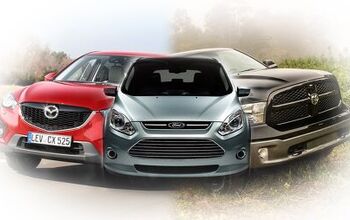
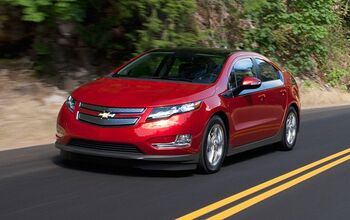

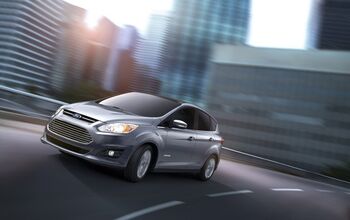
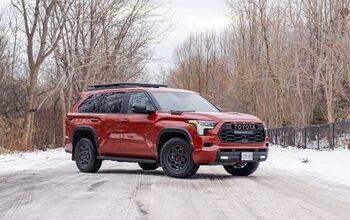

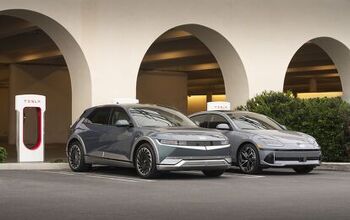
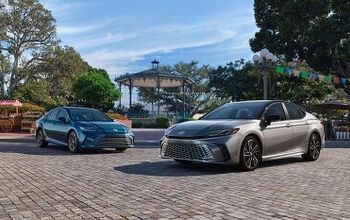
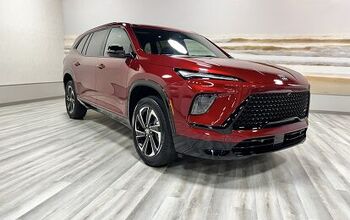
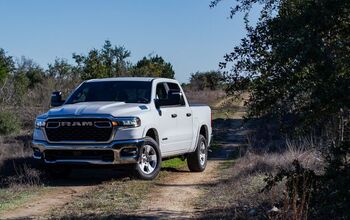
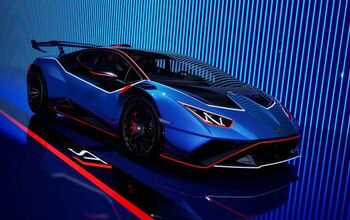

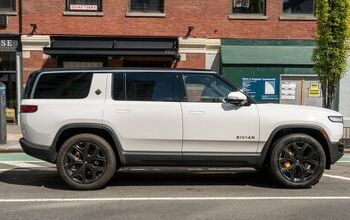
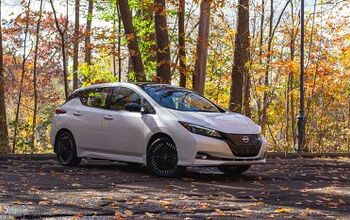
Comments
Join the conversation